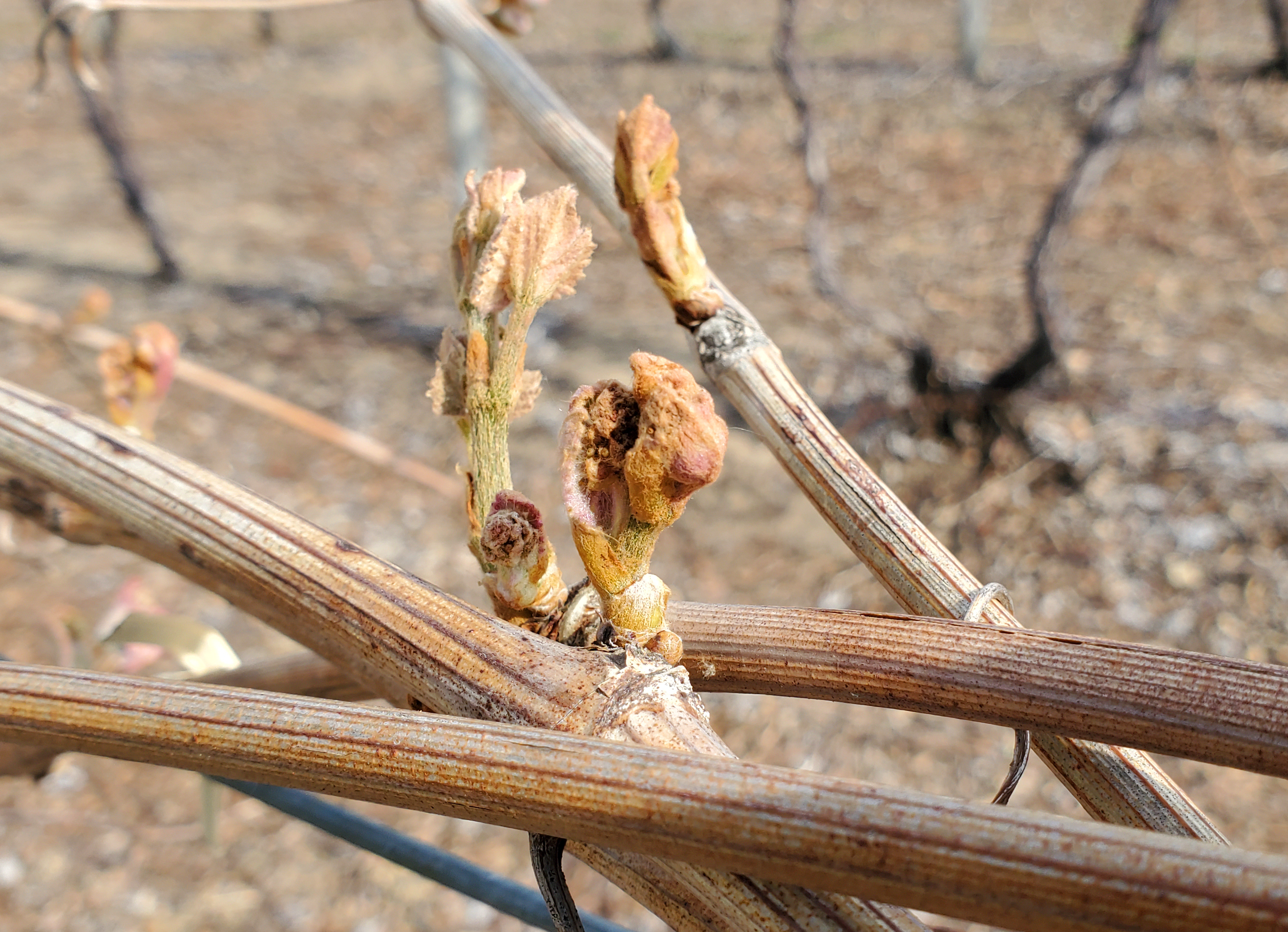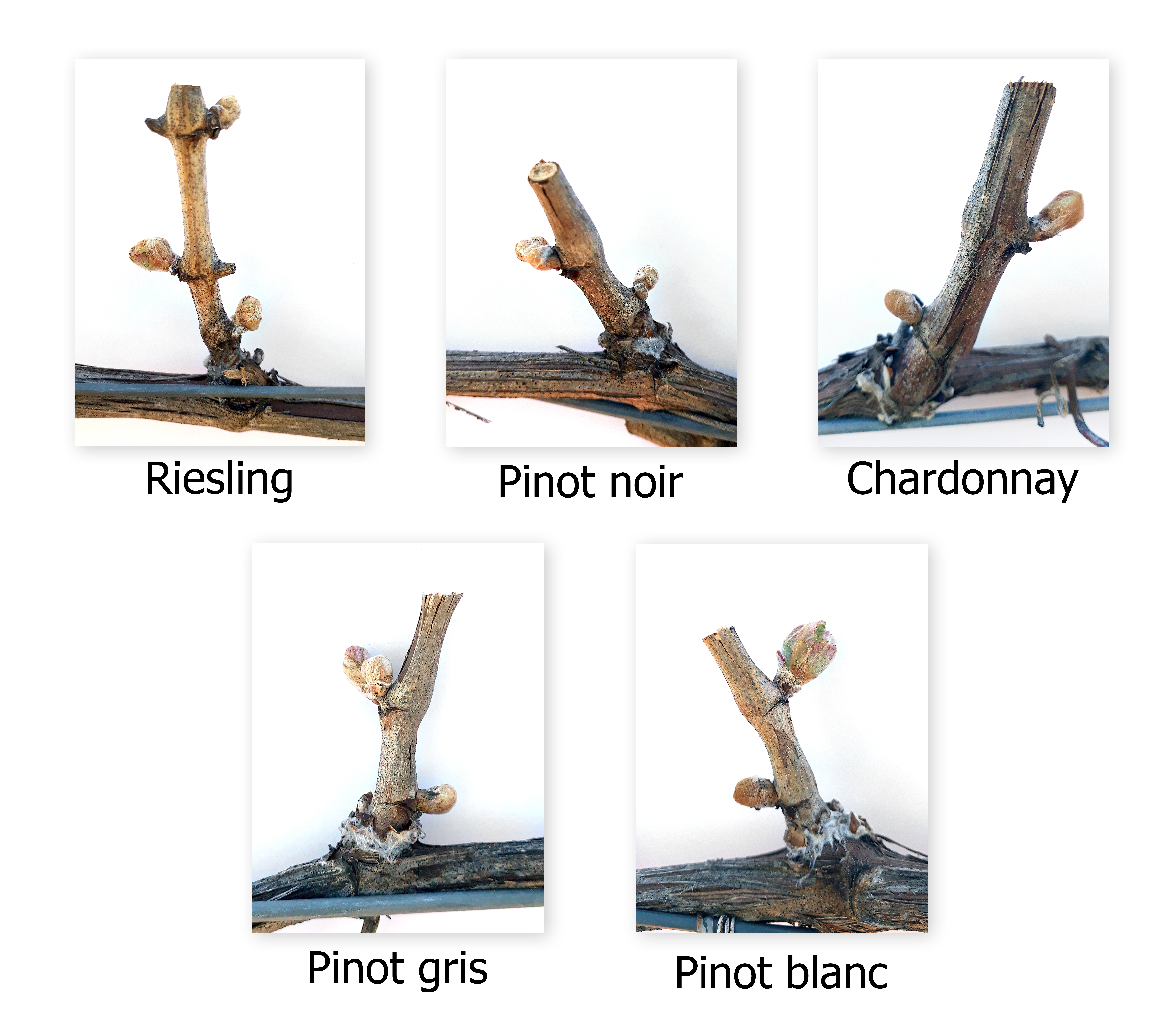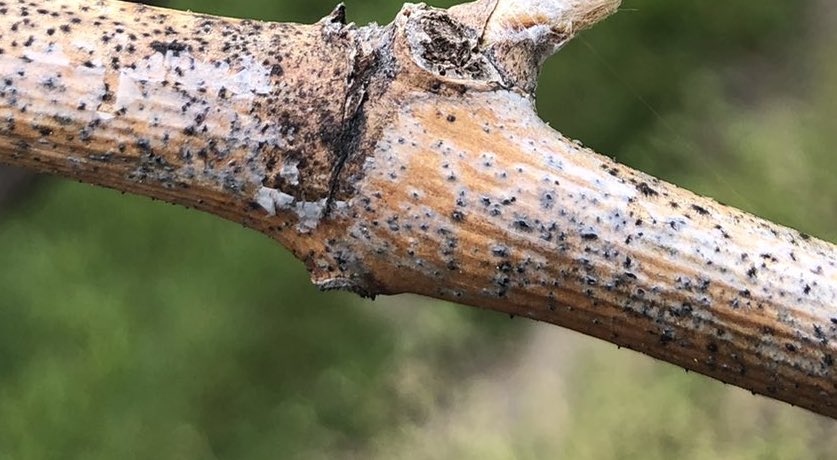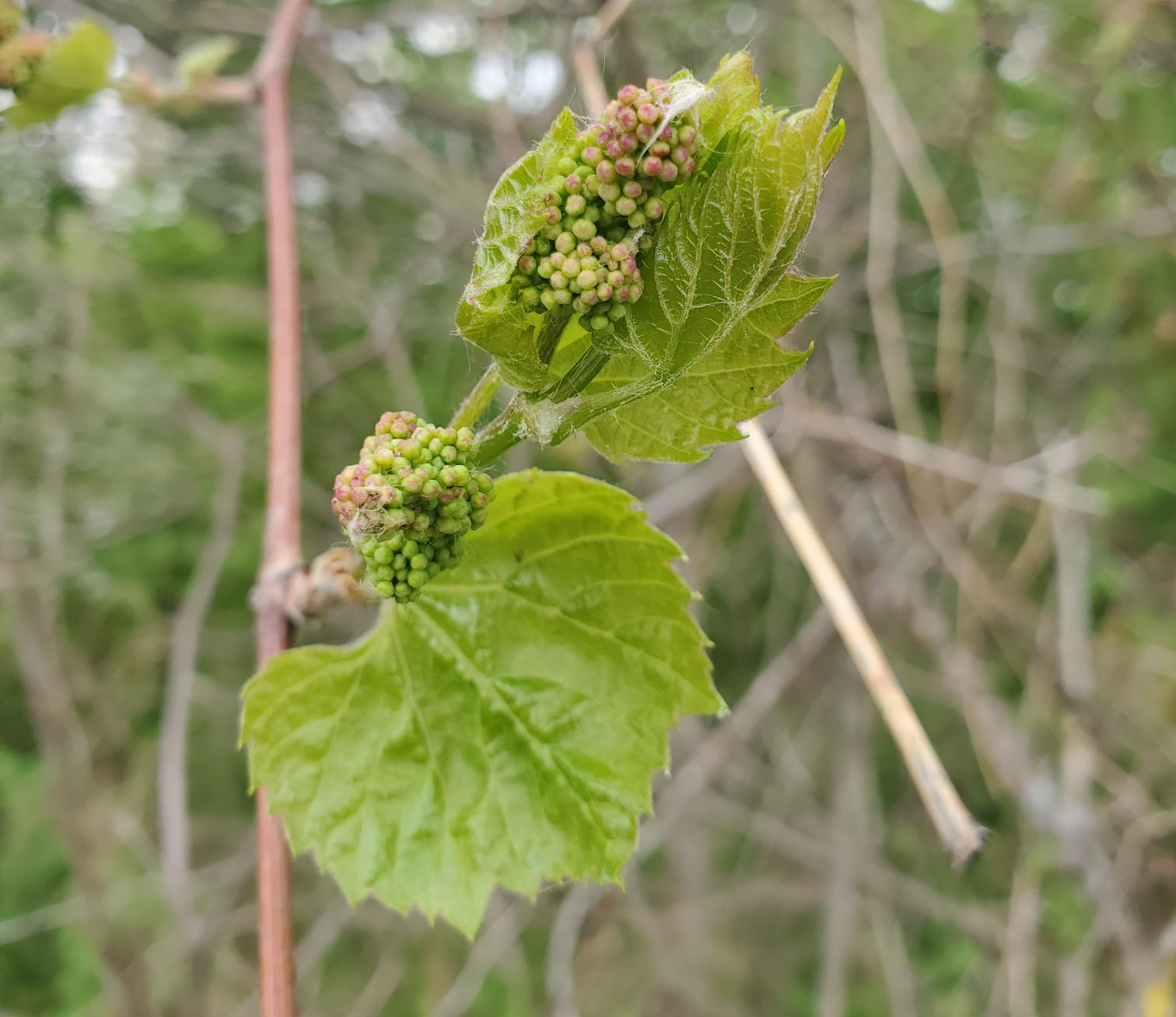Michigan grape scouting report – May 19, 2021
This is the first of our weekly grape scouting reports covering the state of Michigan for 2021. Sign up to receive these reports by email.

The Michigan State University Extension grape team is starting its weekly scouting reports for 2021 this week. This report will provide an update on weather and current grape phenology and discuss pest, disease, weed and horticultural conditions in Michigan’s grape growing regions. We will also have updates on upcoming MSU Extension meetings for grape growers.
Sign up here to receive these weekly grape scouting reports (and other MSU Extension news as well) in your inbox.
Before we get into what’s happening this week, here is a quick review of conditions over the past six months.
Winter
The winter of 2020-2021 was mild. Temperatures seldom dropped below 10 degrees Fahrenheit. A series of deep freeze nights occurred the first two weeks of February. Northwest Michigan saw lows in the single digits, and southeastern areas dropped near zero with a couple of nights below zero. Southwest Michigan was the coldest part of the state, with temperatures near -10 F on the morning of Feb. 17. No significant vine damage from this late winter cold was reported.
Early winter precipitation was at or above average for the state. Since the first of the year, however, precipitation has been significantly below normal. By the start of April, amounts were a third to half of normal, depending on region, and drought conditions have continued.
Spring
March and the first half of April were warm with highs generally above average. The middle of April saw a reversal of this trend with highs regularly below average continuing into the second week of May. Growing degree day (GDD) accumulations are still ahead of the five-year average.
Spring precipitation has been sparse for much of the state. The southern portions have received a third of the normal precipitation for March through early May. The northwest has fared slightly better, but is still around 75% of normal. The lack of precipitation resulted in abnormally dry soils this spring. Moist soils can retain heat from the day that helps protect crops from frost events. In the southern portions of Michigan, the dry soils were unable to help growers protect from a series of frost events during budbreak and early shoot growth.

Current weather
Last week we had a break from the cool trend the state was seeing for the last month. Highs at the start of the week were in the 50s with lows around freezing. By the end of the weekend, temperatures were 20 F higher. No significant rain was recorded in the state.
Hot weather will continue this week with northwest grape regions having highs in the upper 70s, and mid- to upper 80s in southwest Michigan late this week. There are small chances of rain for the coming week, but nothing significant. The northwest will see up to a quarter inch, with everyone else seeing less.
With the transition week, we picked up an average number of GDD last week: 35-50 GDD base 50. The southwest region is 140 GDD base 50 ahead of the northwest region.
|
Northwest Michigan GDD summary from March 1 - May 17, 2021 | |
|---|---|
|
Northwest stations |
GDD 50 F |
|
Petoskey (Petoskey) |
138 |
|
Traverse City (NWMHRC) |
145 |
|
Old Mission (Old Mission) |
138 |
|
Average for northwest region |
144 |
|
Average last week |
108 |
|
Southern stations |
GDD 50 F |
|
Benton Harbor (SWMREC) |
286 |
|
Lawton (Lawton) |
292 |
|
Fennville (TNRC) |
228 |
|
Average for southwest region |
284 |
|
Average last week |
237 |
|
Romeo (Romeo) |
264 |
|
Average for southeast region |
281 |
|
Average last week |
230 |
Vine growth
In the southwest, buds started swelling in the second half of April. A few days of warm weather the first week of May caused many cultivars to break bud. Very little difference could be seen between juice grapes, hybrids, and vinifera grapes. Variability was more due to site specifics (elevation, slope, distance from lake, etc.).
A series of classic radiation frost/freeze events starting the morning of May 5 and continuing through May 14 caused damage to grapes in many parts of southwest Michigan. Again, the damage was variable due to site. Locations further from Lake Michigan and grapes grown on flat or low ground saw more damage. In these areas, significant primary bud loss is visible. In the better sites, damage was minimal. Shoots that survived the frost events are currently at 2-4 inches of growth. With the warm weather this coming week, expect significant shoot growth.
In northern vineyards, most vinifera are at late bud swell to early bud break. The northwest had similar temperatures, but the grapes were far enough behind the southwest that they seem to have survived the cold events from the last two weeks without any significant damage.
See this chart for grape growth stages.

Horticulture
A quality soil test or a previous year’s petiole analysis is important in understanding what nutrients the vineyard needs. Early season nutrient management will most likely include nitrogen, zinc and boron. In addition, potassium and magnesium may also need to be managed at this time. Be careful with the amount of nitrogen applied in your vineyard. Too much can cause flowering to be delayed and vegetative growth to be accelerated. Too little will result in reduced vigor and less, lower quality fruit.
Shoot thinning will begin in the southern vineyards in the next week or two. Shoot thinning is an important canopy management tool to improve air circulation, minimize disease pressure, reduce shading, and improve spray penetration. The right time for shoot thinning time is when the shoots are 5-12 inches long.
Diseases
At this time of year, disease focus is on phomopsis, black rot, anthracnose and powdery mildew. These diseases overwinter on trunks and canes. A dormant spray in the fall or spring can help to manage them before the season starts. Growers still have time to put dormant sprays on grapes in northern Michigan. Sulfur, lime sulfur and copper sprayed directly on the cordon are good dormant control options for these diseases. Copper can also help reduce downy mildew later in the season. Lime sulfur cannot be used once green tissue is present. Sulfur and copper can be used until leaves have opened. Make sure to use enough water for good coverage.

Once shoots have expanded contact fungicides that include broad-spectrum/contact fungicides like the EBDCs (FRAC M3) and captan are effective and function similar to dormant applications by sanitizing the vineyard before bloom. If a grower is organic, early season oils may also be used, which try to suffocate overwintering fungal spores and infected tissues. Early season management should target phomopsis, black rot, anthracnose and powdery mildew, and as we approach bloom, downy mildew.
With the exception of powdery mildew, these spring disease infections typically require rain events. It only takes 0.1 inches of rain above 50 F to trigger a possible infection. Typically, DMIs (FRAC 3), captan and EBDCs (FRAC M3) are effective for phomopsis, black rot, anthracnose and downy mildew. If powdery mildew is the only concern, there are a number of products that are effective (FRAC codes 3, 7, 11, 13, U8, 50, and U13 as well as sulfur). A combination of fungicides containing these FRAC classes should also be effective while helping with resistance management.

Insects
For southern Michigan grape growers, be on the lookout for rose chafer and potato leafhopper. Both should be expected in vineyards soon. Rose chafers can be found feeding on leaves and clusters. Potato leafhoppers feed on the undersides of leaves. The leaves of some sensitive grape varieties can be yellowed and cupped in response to this leafhopper’s feeding. Most vines are very tolerant of their damage and control isn’t warranted. Treatment recommendations for both of these insects can be found in the MSU Fruit Pest Management Guide (E-154).
Tumid gallmaker was an issue for many growers last year during early cluster development. Scouting for early management is key for this insect. For small vineyards, hand picking and removal of infestations can be an effective management technique. If there is a high infestation or if clusters are affected, Movento is an effective treatment. This should be applied at the first sign of infestation. Movento needs to penetrate the waxy leaf surface, so application with a penetrating adjuvant is essential to get control.
In northern Michigan, there may still be time to get on delayed dormant sprays for scale and mealybugs if those were a problem last year. If you have had issues with grape erinium mite, a delayed dormant application of Envidor miticide was the most effective treatment in 2020 trials by MSU. If possible, applications should be made before there is any green tissue. Flea beetles and climbing cutworms also affect vines during bud swell. Both of these pests attack the developing buds. Their damage can be hard to separate. Cutworms chew across the surface of the bud. Flea beetles bore small holes in the bud. See “Bud swell is the time for monitoring vineyards for cutworms and flea beetles” for more information.
Male grape berry moth are being caught in traps in southwest Michigan. Female activity from this first generation is very limited so far and requires clusters for egglaying. Wild grape bloom is used as biofix for grape berry moth models. Record the date when 50% of the clusters on wild grape are at 50% bloom. This date can be entered into the grape berry moth model in Enviroweather to predict when egglaying will start. Wild grape clusters are already starting to separate in some of the warmest areas of southwest Michigan, indicating bloom should be in the next week or two, depending on how long the expected warm trend continues.
Targeted management of this moth is focused in late June or early July when egglaying by the second generation of this pest starts in southwest Michigan. In high pressure sites where this pest has been a problem in recent seasons, early treatment for protection of the clusters at bloom in mid-June may be warranted. Product selection can be guided by what other pests may be present, such as potato leafhopper, rose chafer, etc.

Upcoming meetings
Our regular Southwest Michigan Monday Fruit IPM Updates are available online. You need to register to receive the Zoom link and password for these meetings. The webinars are free and one pesticide applicator credit is available for each meeting. We had over 70 growers attending our Monday meetings last year.
A prebloom grape meeting is scheduled for Thursday, May 27, from 1 to 4 p.m. Register here. This meeting is good for three RUP credits.



 Print
Print Email
Email